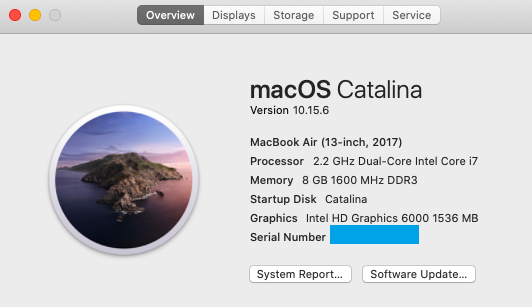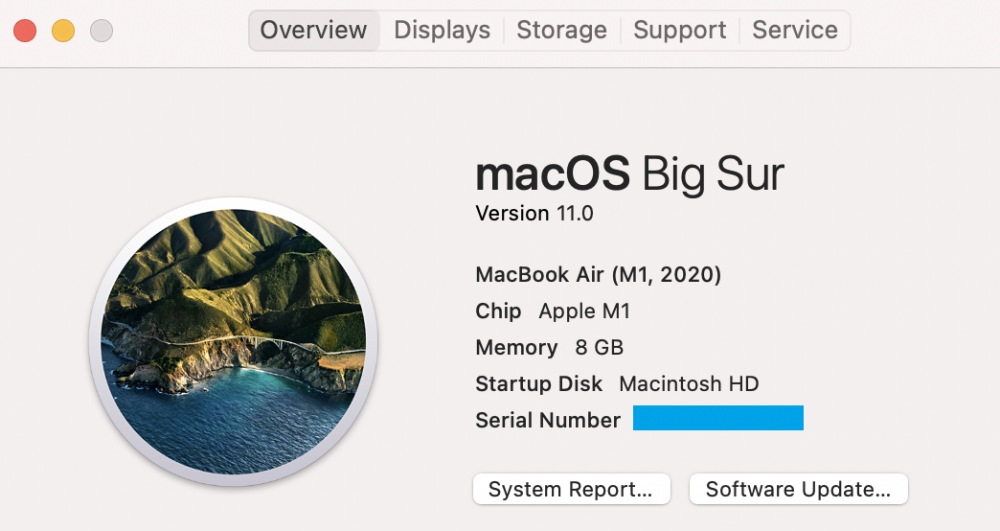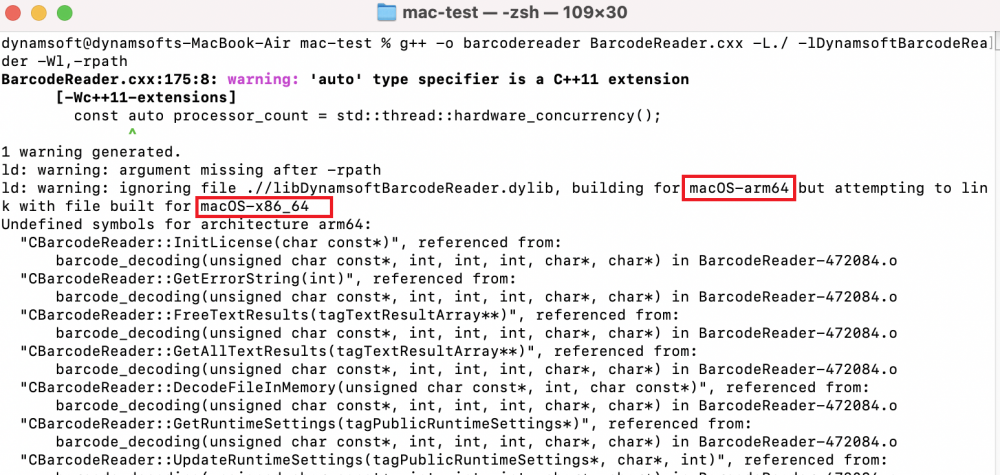Apple announced new Mac models with Apple M1 chip recently. Although Dynamsoft has not released an Apple Silicon version of Dynamsoft Barcode Reader SDK yet, I am curious how will x86_64 barcode SDK perform under Rosetta 2. In this article, I will build a simple command-line barcode reader app on M1-powered MacBook Air, and compare the barcode decoding performance by running the app respectively on Intel-based macOS and M1-based macOS.
Mac Barcode SDK Download
Dynamsoft Barcode Reader v7.6 for macOS
Note: the header file included in the package only supports Objective-C and Swift. To build C/C++ programs, you need to download corresponding header files from Windows and Linux packages.
Barcode Decoding in C/C++
Firstly, you need to include the header file DynamsoftBarcodeReader.h in your *.cpp file:
#include "DynamsoftBarcodeReader.h"
The next step is to initialize a barcode reader object and set a valid license:
CBarcodeReader reader; reader.InitLicense (license);
To decode barcodes, there are three optional methods:
- DecodeFile – Decode barcodes from a specified image file.
- DecodeFileInMemory – Decode barcodes from an image file in memory.
- DecodeBuffer – Decode barcodes from raw buffer.
If you don’t have image codec libraries, you can use either DecodeFile() or DecodeFileInMemory().
Finally, barcode results can be extracted by calling GetAllTextResults():
TextResultArray *paryResult = NULL;
reader.GetAllTextResults(&paryResult);
for (int index = 0; index < paryResult->resultsCount; index++)
{
}
Intel Chip vs. Apple Silicon
Once coding is done, we can get started to build and test the barcode program on different machines.
Test Image
I used an image containing multiple barcodes.

Intel-based MacBook Air

Build and run the app:
% sysctl -n machdep.cpu.brand_string Intel(R) Core(TM) i7-5650U CPU @ 2.20GHz % sw_vers ProductName: Mac OS X ProductVersion: 10.15.6 BuildVersion: 19G73 % g++ -o barcodereader BarcodeReader.cpp -L./ -lDynamsoftBarcodeReader % ./barcodereader test.jpg CPU threads: 4 Thread count: 1. Total barcode(s) found: 31. Time cost: 426 ms Thread count: 2. Total barcode(s) found: 31. Time cost: 505 ms Thread count: 3. Total barcode(s) found: 31. Time cost: 483 ms Thread count: 4. Total barcode(s) found: 31. Time cost: 479 ms Multi-thread best performance: thread_count = 1, timecost = 426
M1-based MacBook Air

Since Rosetta 2 can translate apps that contain x86_64 instructions to arm64 instructions, I can just copy the program I built on Intel-based MacBook Air to M1-based MacBook Air.
Because Xcode 12.2 and later versions support building universal binaries, I can also link the x86_64 dynamic library and build the program on Mac with Apple M1:
% sysctl -n machdep.cpu.brand_string Apple processor % sw_vers ProductName: macOS ProductVersion: 11.0 BuildVersion: 20A2411 % g++ -target x86_64-apple-macos10.9 -o barcodereader BarcodeReader.cpp -L./ -lDynamsoftBarcodeReader % ./barcodereader test.jpg CPU threads: 8 Thread count: 1. Total barcode(s) found: 31. Time cost: 291 ms Thread count: 2. Total barcode(s) found: 31. Time cost: 302 ms Thread count: 3. Total barcode(s) found: 31. Time cost: 300 ms Thread count: 4. Total barcode(s) found: 31. Time cost: 298 ms Thread count: 5. Total barcode(s) found: 31. Time cost: 301 ms Thread count: 6. Total barcode(s) found: 31. Time cost: 297 ms Thread count: 7. Total barcode(s) found: 31. Time cost: 298 ms Thread count: 8. Total barcode(s) found: 31. Time cost: 298 ms Multi-thread best performance: thread_count = 1, timecost = 291
Note: the build will fail without the argument “-target x86_64-apple-macos10.9”.

We can see the barcode decoding speed on MacBook Air with Apple Silicon is much faster.
Source Code
yushulx/mac-command-line-barcode-reader (github.com)
The post How to Use Dynamsoft Barcode Reader SDK on Mac with Apple Silicon appeared first on Dynamsoft Developers.